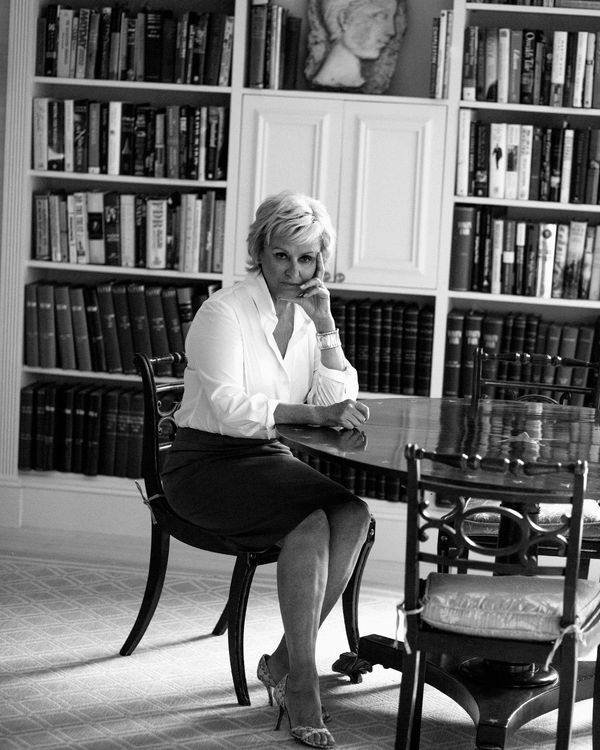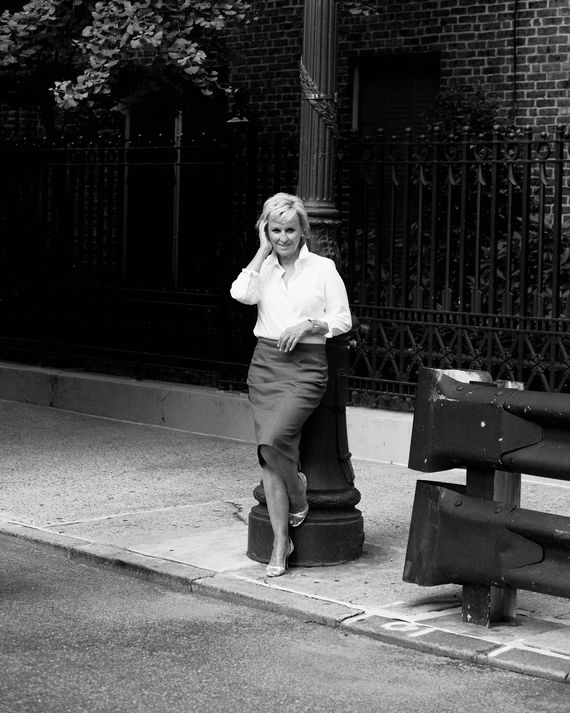
“Powerhouse” is a term often applied to people who don’t deserve it, but I’d believe you if you told me that the word was invented for Tina Brown. Powerhouse perfectly encapsulates the level of energy she has had to summon for the past four decades at the top of some of the most prestigious media titles, including Tatler, Vanity Fair, The New Yorker, and the Daily Beast.
I was a bored 12-year-old in a small town in the northeast of England in the early ‘90s when I first saw a picture of Tina Brown — then the editor of Vanity Fair — leaving a New York party in a black velvet dress and killer heels in the newspaper. From an early age, I harbored an ambition to become a journalist, and she was my ultimate hero — more than any singer or actress of the time.
I now run my own magazine and try to follow her golden rule of being a good editor — keep your reader surprised. Speaking to her made my 12-year-old self go crazy, but thankfully she was gracious and open.
What is it about a story that first grabs you and makes you want to develop it further?
It’s always an unanswered question. If I read a piece or hear something and I think, “That’s interesting, but there’s more to tell. It sounds like this story has inner riches that have not yet been properly pumped.” Then that gets me going.
I think there are a tremendous amount of very unexplored people in public life at the minute. There are leading figures in Trump’s cabinet [who] you know nothing about. You read these superficial pieces and they’ve all got the same point of view. They never ask: Who is this person really? What were they like in the past? What motivates them? Why have they got this reputation and how did they wind up with it?
Why do you think that is?
I think journalists are just totally stretched turning over online stories because of immense competition, that they don’t have the time to do that reporting even if they want to.
In Europe there’s a really healthy independent magazine scene. Is that the case in America?
I think European magazines are far healthier than they are here. The other place where I still think print is very healthy is India. I love going to India because there is a great literary culture, there are a lot of fabulous magazines, newspapers. Compared to what we have here it’s very vibrant.
What do you think makes a winning publication?
I’ve always been a great believer in mix. I think the element of surprise is extremely important, you never want to bore your readers. You have to have a great cover — that is an absolute essential and then you want to have a great gripping reporting piece, a fun piece, and an aesthetically pleasing piece. A magazine isn’t a bunch of articles with a staple through it. A great magazine is about how the pieces play off each other, how the pieces are presented and packaged. That’s a much more skillful task than it is to just say, “Okay, I’ve got these great articles this month, I’ll put a few pictures in and that’s my finish.”
One of the things I thought was really interesting in The Vanity Fair Diaries is where you talked about how you helped writers who weren’t traditionally trained to finesse their style.
I’ve done a lot of that in my career — digging stories out of people who aren’t writers and then helping to make them writers. For instance, I worked successfully with a guy who was an on-the-beat NYPD cop. I felt he had a certain amount of sensibility and the ability to tell these amazing and gripping stories about life as a cop, so we developed them and they became very popular in The New Yorker.
One of the things I say in the Diaries is you can teach a writer how to write a lead or to get the facts right, but you cannot teach a writer to notice the right things. You don’t hire a writer just for the words, you hire them for their point of view and the way they look at the world.
And what about finding those great stories? In the Diaries you’re out socializing or hosting incredible dinner parties, but it seemed that more than just having fun you were looking for the stories and making connections.
That’s totally true. I still feel that talking to people is the best way you get a story. It’s fascinating when you’re talking to somebody how they will suddenly say something in passing and you go, “Wait a minute, that’s an extraordinary thing,” and then you pursue that line [in a way] you would never have done if it had just been something one-dimensional online.
I’m always telling my younger staff that they should actually get out as much as they can. Go to panels, go to talks, and always try to meet the person afterwards. Get their [business] cards so they can become a source whom you can call on for a unique perspective. There’s nothing like a real conversation with a person who knows something to trump getting something online.
Women in the World is about getting women leaders and change-makers together through a large annual conference and smaller events. It’s such an immediate and interesting way to tell stories because you can’t hide behind rounds of edits, and the speakers are right there with all their vulnerabilities and honesty.
This is probably the purest form of storytelling I’ve ever done. Women in the World has been banging the drum for the global women’s movement since 2010. We want to look at women’s movements in Africa, the Middle East, and further, to see what we can all learn from each other.
How do you feel about the place of women today?
Movements like #MeToo have definitely created a revolution in a lot of things at the moment and, let’s hope that those are things that are going to stick. However, the reality is that this year there [are] actually fewer women CEOs than in the last two years. I think there is a real pressure now on business and culture to include a diverse range of voices and that’s really not just a choice, but an imperative.





